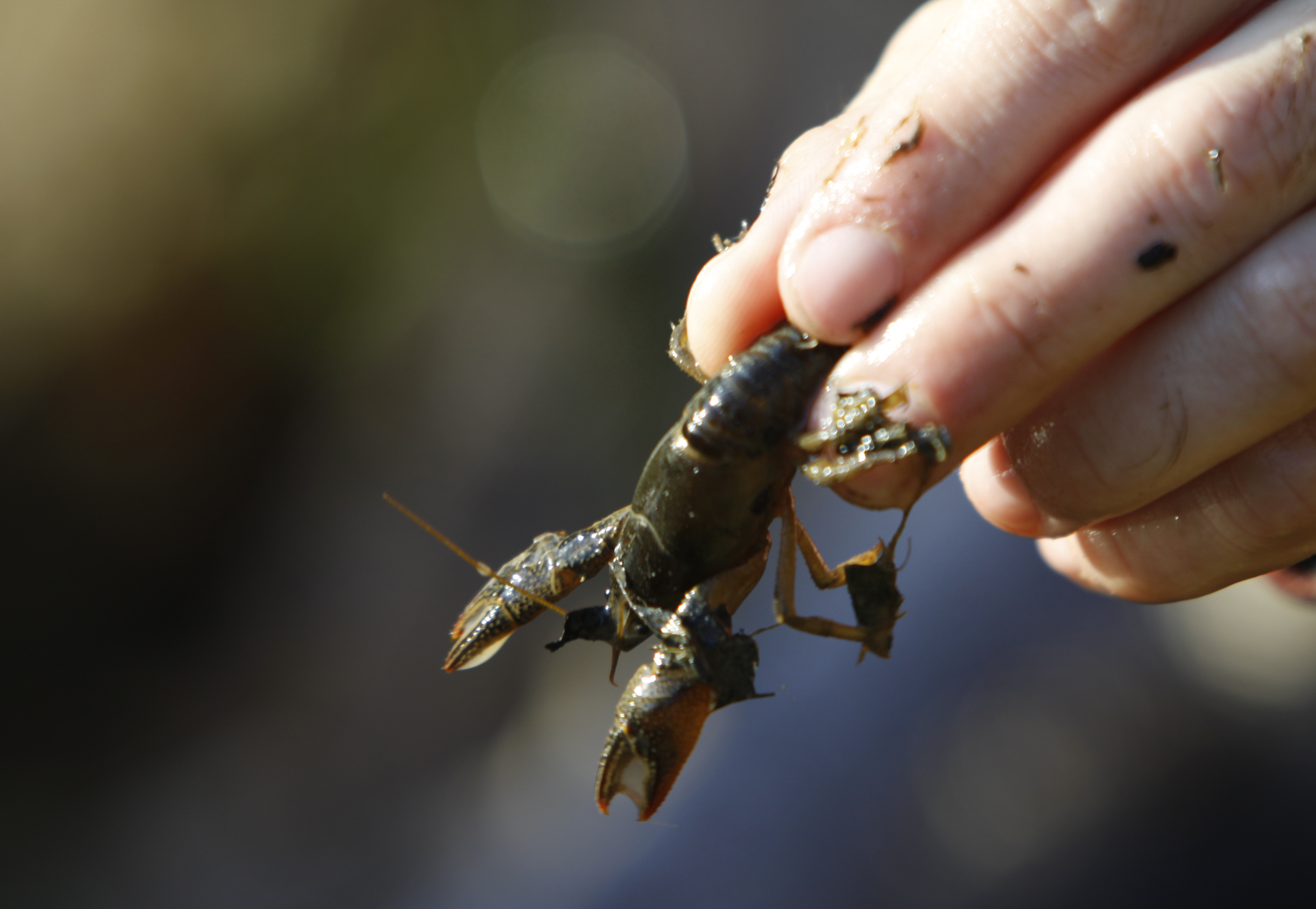Read moreChef Virginia Willis to teach conservation in the kitchen at Tennessee Aquarium's Serve and Protect event
FAST FACTS• The Gulf of Mexico is the ninth largest body of water in the world at 615,000 square miles.• More than 50 percent of the USA's continental wetlands can be found adjacent to the Gulf.• At more than 1.3 billion pounds of annual seafood production, the Gulf produces more finfish, shrimp and shellfish than the south and mid-Atlantic, Chesapeake and New England, combined.Source: Harte Research Institute for Gulf of Mexico Studies
IF YOU GOWhat: The Tennessee Aquarium's third annual Serve and Protect event. This year's theme is "Decapod Duel" and will feature two celebrity chefs.Where: Tennessee Aquarium IMAX Center, 201 Chestnut Street.When: Sept. 19. The event begins at 11 a.m. in the IMAX Great Hall. Gourmet boxed lunches will be provided for guests in the theater while Susan Spicer and Virginia Willis cook onstage. A dessert reception with the chefs will follow the one-hour show. At 5:30 p.m., Spicer and Willis will square off in a competition to see who comes up with the most-creative dish using shrimp and crawfish. The competition will be followed by a seafood dinner, prepared by chefs from Chattanooga restaurants.How much: Individual tickets for the lunch are are $75. Individual tickets for the evening event are $200 each. Tickets for both events are available at: tnaqua.org/SustainableSeafood/2013SpecialEvent
It's well over 400 miles from Chattanooga to the Gulf of Mexico.
But really, conservationists say, the Gulf's waters are as close as it takes you to get to the Tennessee River. Or that creek in your backyard.
People may not appreciate that almost everything in the Tennessee River flows into the Gulf, said Dana Wright, director of policy for the Tennessee Clean Water Network.
"The entire Tennessee watershed flows into the Gulf. And we are messing it up for the people down there who are trying to make a livelihood," she said.
Like the other states which have rivers that eventually drain into the Mississippi, the region's bad environmental habits also drain into the Gulf -- creating a Connecticut-sized "dead zone" in gulf waters.
Dead zones are oxygen-depleted waters that are damaged by "nutrient over-enrichment" -- an inflow of fertilizer runoff and water from treatment plants, explains Thom Demas, the Tennessee Aquarium's curator of fishes.
Once it reaches the Gulf, that nutrient runoff causes algae to swell into large blooms, which seeps oxygen from the water as it grows and breaks down.
Such severe oxygen depletion means the vast majority of organisms -- right down to bacteria -- can't survive.
"Fertilizer or something from my backyard can get in the water and contribute, in a small part, to the dead zone," Demas said. "But really, we need to look at how that is extended to large farms. Ultimately those nutrients get into the watershed, and if that water gets into the Tennessee River, then into the Ohio, then the Mississippi -- then the Gulf."
On the one-year anniversary of the Deepwater Horizon disaster, Dr. Larry McKinney, executive director of the Harte Research Institute for Gulf of Mexico Studies, spoke at the Tennessee Aquarium.
While the disaster was bad, he said, it was one the Gulf would eventually recover from. McKinney's bigger worry was the long-term impact from inland runoff.
Dead zones threaten the region's fishing economy, and challenge the resiliency of the Gulf's ecosystem.
The Aquarium is trying to bring more attention to Gulf conservation through its sustainable seafood program, "Serve and Protect," which holds its annual fundraising event Sept. 19.
Even if the Gulf doesn't seem like Chattanooga's problem, Chattanoogans have much at stake in the region: The Gulf functions as the nation's fuel pump, with more than 4,500 oil and gas platforms and structures dotting its waters, according to the Harte Research Institute.
It's also where the country reels in a huge amount of its seafood -- producing 1.3 billion pounds annually.
The Gulf's climate plays a huge role in national weather forecasts, and its beaches are heavily frequented by those in the tri-state region.
"The water in the Tennessee River theoretically has been and will be everywhere on the planet eventually," Demas said. "When it hits the Gulf of Mexico it's connected to every other ocean. It is a long way away -- but we're definitely connected to it."
Demas says protecting the surf means being much more mindful about the turf. Demas advises supporting smaller, locally-operated farms which use much less fertilizer and produce less animal waste, and cutting down on red meat -- since beef cattle farms produce a large amount of nutrient runoff.
On a more sweeping level, the Tennessee Clean Water Network works to change policy that impacts those levels of runoff throughout the state.
Wright addresses nutrient policy -- how much and what kind of chemical elements make it into that runoff. She has been pushing for more stringent nutrient levels in what flows from treatment plants.
"Some states have blanket water quality standards for nutrient levels, but Tennessee does not," Wright said.
The group is also working with groups in other states to attach more conservation measures tied to the subsidies farmers get.
"The secret is managing how we're doing things," said Demas. "If we can minimize the runoff then we're taking care of our river, if we're taking care of our river, we're taking care of the Gulf."
Contact staff writer Kate Harrison at kharrison@timesfreepress.com or 423-757-6673.
